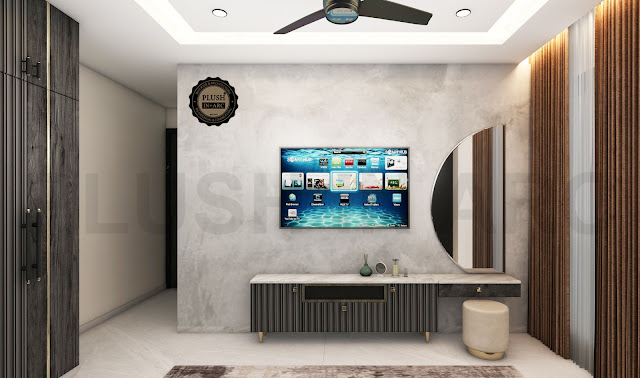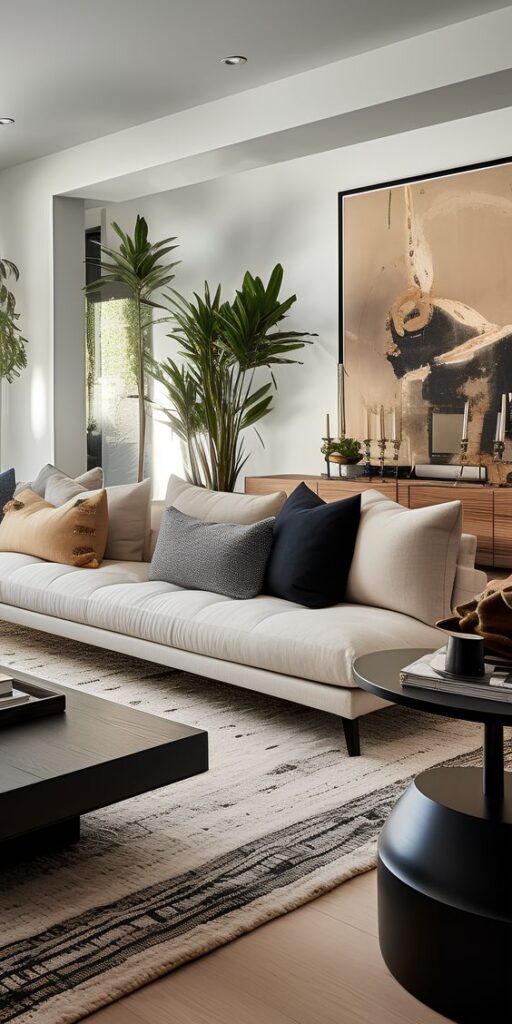1. Consider the Room’s Purpose:
Different rooms serve different purposes, so the color scheme should align with the intended use.
For example: Bedroom:
Consider calming and soothing colors like blues and greens.
Living Room:
opt for warm and inviting tones like earthy neutrals, warm grays, or muted shades of red and orange.
Kitchen:
Bright and clean colors can work well, or you might choose a color that complements your appliances and fixtures.

2. Understand Color Psychology: Colors evoke emotions and moods. For instance:
Blue:
Calming and serene.
Red:
Energetic and bold.
Green:
Fresh and rejuvenating.
Yellow:
Cheerful and optimistic.
Consider the desired atmosphere for each room.


3. Use the 60-30-10 Rule:
Divide your color choices into percentages:
60% for the dominant color (walls, large furniture).
30% for the secondary color (upholstery, accent walls).
10% for accents (decor, accessories).

4. Consider the Light:
Natural and artificial light can affect how colors appear. Test samples in different lighting conditions before finalizing your choice.

5. Create Flow with a Unified Palette:
Maintain a cohesive look throughout your home by using a unified color palette. Consider how colors transition from room to room.

6. Test Before Committing:
Purchase paint samples or use large swatches before committing to a color. See how they look in different areas of the room and at different times of the day.

7. Textures and Finishes:
Different textures and finishes can influence how colors are perceived. Matte finishes absorb more light, while glossy finishes reflect light, affecting the overall appearance.

8. Consider the Size of the Space:
Light colors can make small rooms feel larger, while dark colors can create intimacy in larger spaces.


9. Nature as Inspiration:
Nature often provides beautiful color combinations. Consider the calming blues of the ocean, the warm tones of a sunset, or the earthy greens of a forest.

10. Personal Preferences:
Ultimately, your home should reflect your personal style. If a color resonates with you and makes you feel comfortable, it’s a good choice.

- KIDS ROOM COLOR THEORY:
Color theory plays a crucial role in creating a stimulating and comfortable environment for a child’s room. Different colors can have various effects on mood, behavior, and overall well-being.

a. Neutral Tones:
Neutral colors like beige, gray, or soft pastels: These colors provide a versatile and timeless backdrop. They can be easily paired with other more vibrant colors in furniture, decor, and accessories.

b. Soft and Calming Colors:
Blue: Known for its calming effect, blue can promote relaxation and tranquility. It’s a great choice for promoting a peaceful atmosphere, especially in bedrooms.
Green: Green is associated with nature and has a calming effect. It can also promote feelings of balance and harmony.

c. Personalization:
Allow the child to have some say in choosing their room colors, promoting a sense of autonomy and self-expression.

Bonus Tip:
Accent Colors: Introduce accent colors sparingly for visual interest. These can be incorporated through throw pillows, artwork, or small decor items.

The Power of color: how to choose the right palette for your home Read More »

